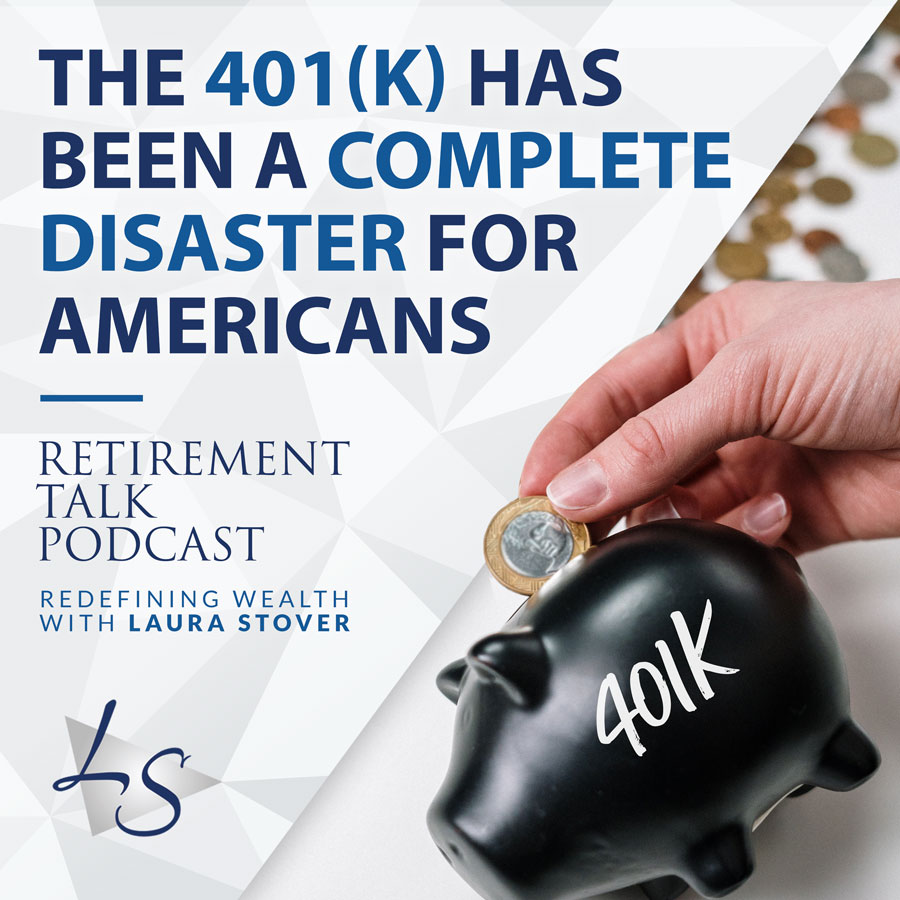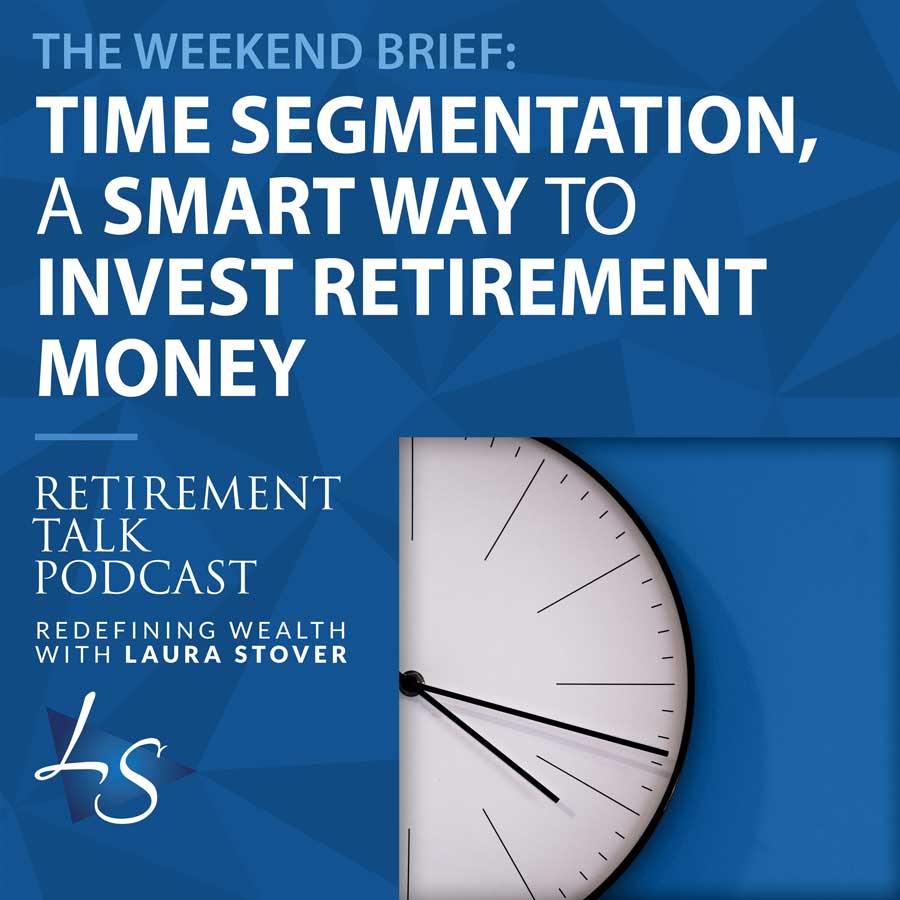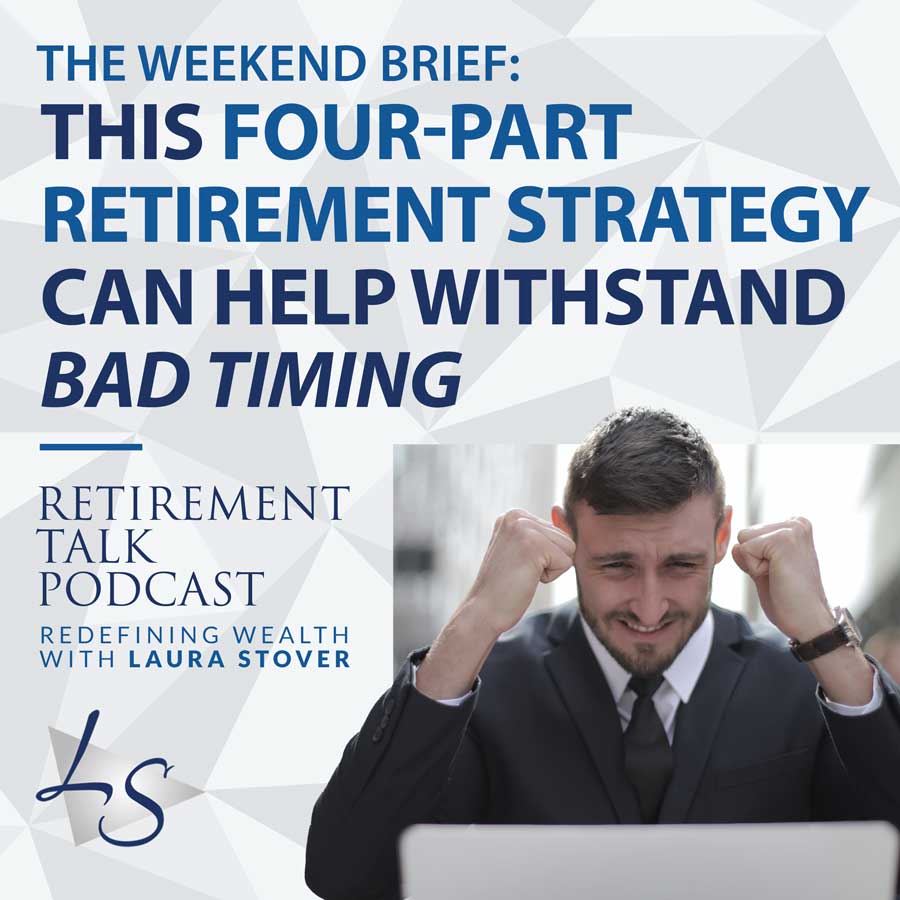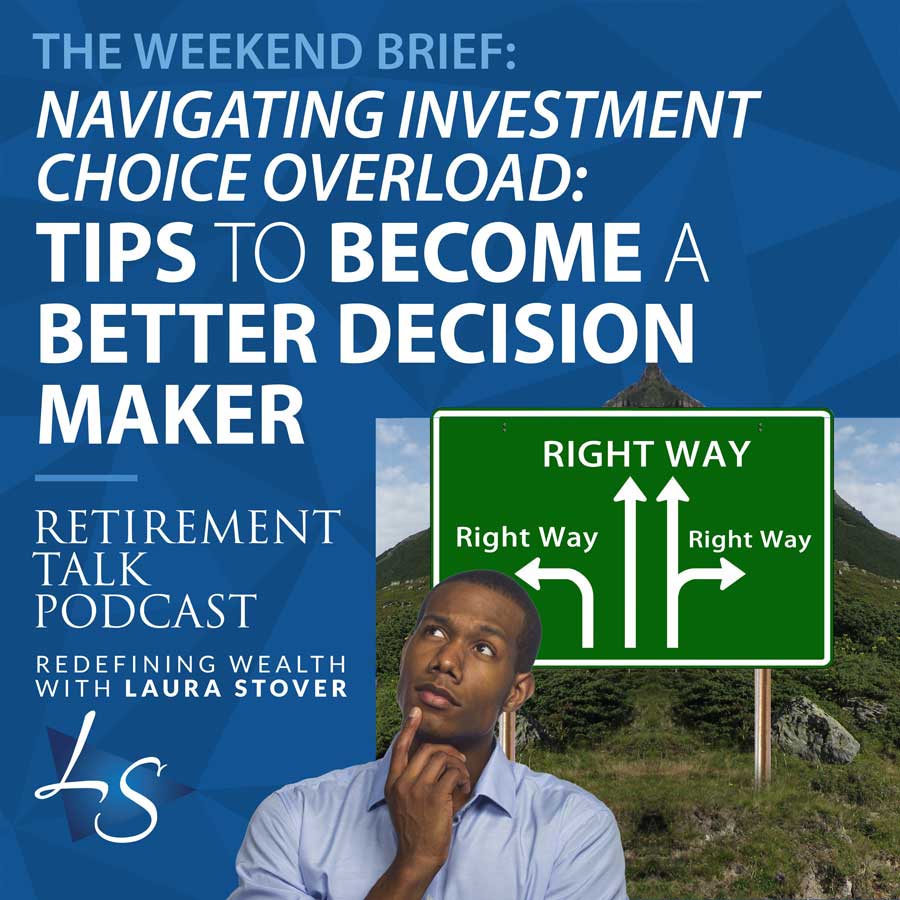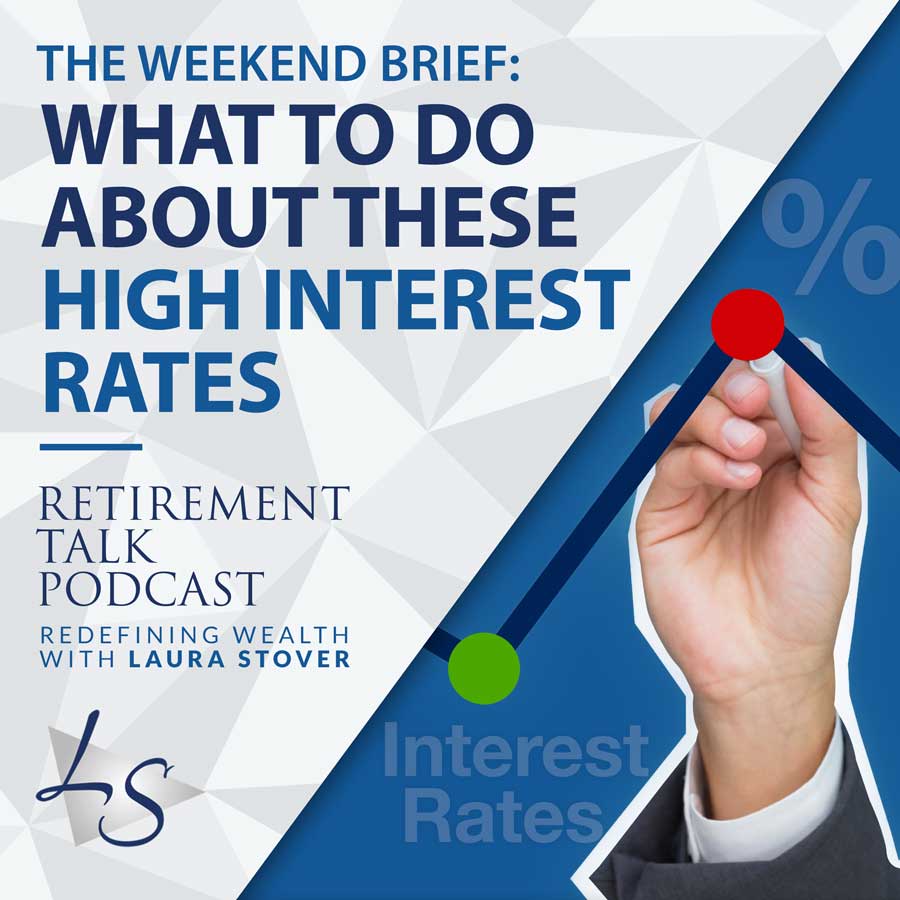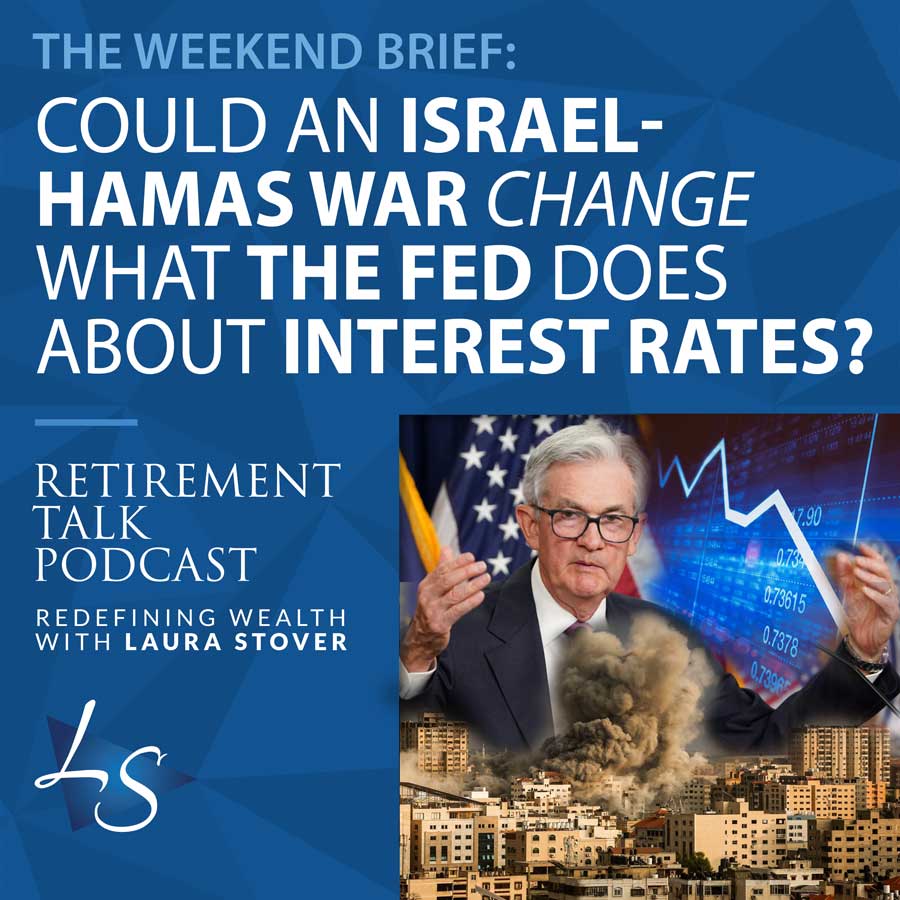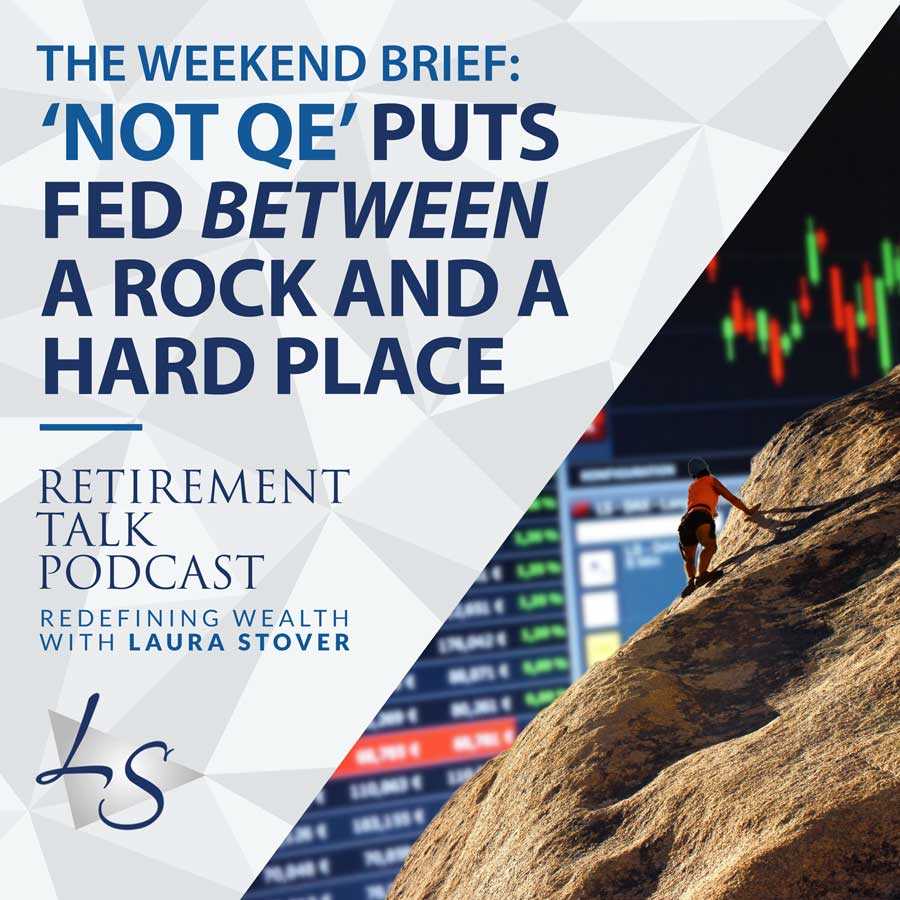For many of us a 401(k) is our primary saving tool for retirement. So, why is the 401(k) now being considered a disaster? Most people don’t have a lot of background in investing when they start saving, defaulting instead to the guidance of their employers. Originally developed to be a bonus in accordance with a pension, the 401(k) was not designed to be a stand-alone account to depend one’s retirement on. However, that’s where many people’s financial plans stand today.
Consequently, 401(k) plans were never analyzed as a replacement retirement vehicle, therefore, no one scrutinized the long-term practicality of using a 401(k) in this way. As we’ve seen more and more companies step away from pensions, we’ve also seen more investment in this type of account. For big companies and wall street the 401(k) was a big win, for the average American people, not so much. It’s been a poor substitute for a pension plan. On today’s episode, we’ll explore the history of the 401(k) and whether it can be considered a disastrous retirement vehicle.
The book mentioned in today’s show >> Wealth Unbroken
Rate & Review and Subscribe to the Podcast:
https://podcasts.apple.com/us/podcast/retirement-talk-podcast-with-laura-stover/id571347188
Links
Schedule a Review: https://redefiningwealth.info/schedule/
Timestamps (show notes):
1:11 – Your 401(k) in perspective
5:44 – How did the 401(k) provision start?
9:35 – Not designed to be a stand-alone
12:16 – Is this the right retirement vehicle?
14:44 – 401(k) is a pre-tax contribution plan
15:23 – Pension is a defined benefit plan
18:54 – Loss of wealth during the recession
20:14 – A 401(k) doesn’t ensure anything
21:15 – Market volatility and its impact on a 401(k)
24:09 – There is a lot of volatility in our current market
25:53 – Losses impact your overall lifetime wealth
Listen & Subscribe
Review the Transcript:
Ron Stutts: Welcome to Retirement Talk, the Redefining Wealth Show. Your source for financial information for pre-retirees and retirees. We’re here each and every week to help you better navigate during these economic times. We’re here to discuss thoughts and ideas in the field of finance and retirements as well as discuss trending topics that could impact your retirement. We will break it all down. These discussions can help you make better informed decisions so you can make better financial choices and live the lifestyle you imagined for retirement.
Laura Stover is a registered financial consultant and CEO of LS Wealth Management, as well as founder and owner of LS Tax, a consulting firm. She’s been featured in Forbes, CNBC, and The Wall Street Journal. I’m Ron Stutts. Our topic for today is the 401(k) has been a complete disaster for Americans. Based off the book Wealth Unbroken, we provide a background for the 401(k) and its inception, which is a key element to this topic for today’s show. Now, Laura, the 401(k) has been a primary savings tool for millions of people. Many of us will be relying on it. In fact, what is it? Are you saying it’s a disaster?
Laura Stover: Well, hey Ron. Hello. Hello. Hello and nice to have you back this week.
Ron Stutts: Its great to be with you.
Laura Stover: Michael is not with us today, but Ron, yes, this book is quite fascinating. A tax attorney, investment advisor, and I think a lot of us in the industry that really know more potentially as far as the history of the 401(k). It’s the primary savings tool today for most Americans. And I think to set the backdrop, as you stated in the intro, it’s important for listeners to understand the inception of the 401(k), because that contributes greatly to this contention that she outlines in the book Wealth Unbroken, and it starts around chapter 70 or page 70 or so in the book for anyone that’s interested.
But the 401(k) by default, as she states, it became a disaster and it’s become the primary savings tool for virtually every American and it’s a very important topic of discussion. So I think it’s relevant to do a little bit of review on the history of the 401(k) in order to properly put this into perspective. Now, when you began your first real job, Ron, your career, do you remember what did you know about retirement planning?
Ron Stutts: Well, that’s so long ago, I don’t even recall the name of the company that I was working for. But no, I knew absolutely nothing about 401(k)s.
Laura Stover: Most people have no prerequisite, no background. If you start investing younger or whatever age you are when you begin, we just naturally do these things. And our employers are kind of our guidance when we go to work for a company, aside from the salary you make and how much PTL you have. And your retirement plan, your health plan, those are very important components in terms of the benefits. So you’re not alone. Most people know zero, absolutely nothing about retirement when you begin your first job. Now we’re not taught about this in school for the most part, as far as retirement or financial topics or anything about building wealth. And believe it or not, the development of America’s main method for saving for retirement, the 401(k) indeed happened by accident. It is the Revenue Act of ’78. And that was really a corporate tax dodge.
Ron Stutts: Really? How so?
Laura Stover: Originally it was designed for highly compensated executives and it became then a permanent part of the IRC or the Internal Revenue Code with the Revenue Act of 1978. The 401(k), the provision and its birth, and it was a way to reduce modified, adjusted gross income for highly compensated executives on top of a golden parachute, the pension. Remember you could retire with a pension, a gold watch and-
Ron Stutts: Oh yeah, I remember what those were.
Laura Stover: And that’s part of why it’s a disaster. It was intended to be for people that would have access to professional money management initially. And it certainly was never tested or even thought of as a mainstay retirement vehicle.
Ron Stutts: Well, that’s a key point it seems. And the reference to professional money management, most people if not all, lack professional money management on this plan and any kind of plan for the most part, thus the industry integrated target date funds to try and address that problem. Or if it has a lot of company stock that could pose to be a problem, people really are not getting a high level of money management, cherry picking returns and making fun selections. Many times they don’t rebalance or possess the skills to make informed decisions on the allocations. But what you just stated with the 401(k) happening by accident, it’s a real tax situation. So let’s continue this story of the 401(k)’s inception. How did this all start?
Laura Stover: Well, some reports revealed that the law firm of Hughes Aircraft Corporation recommended they start to amend their savings plan to utilize the new 401(k) provision as early as 1978. I think I was in the eighth grade. But at first, this new tax provision was mostly ignored and most employers had savings plans that allowed employees to put after tax money and which was then matched by the employer. So we all know if you have a 401(k) and you want to know what your employer matches, so this is kind of the starting point. But in September of ’79, it all changed.
This man by the name of Ted Benna, he was a benefits consultant who worked for a small firm in Philadelphia, the Johnson Companies, not Johnson & Johnson, different Johnson. And they needed to come up with a way for a bank client to replace their cash bonuses with tax deferred profit sharing plans instead and one that employees wouldn’t be able to access until they left the bank’s employment.
So Benna had the idea to use the new 401(k) provision to allow employees to defer their cash bonus pre-tax with a corporate match. The bank client decided not to use the plan Benna developed because they didn’t want to implement something that was never used before. But it didn’t change the fact that many employers were looking for new ways to offer employee benefits and retirement plans. New funding reserve requirements had been mandated in the meantime under ERISA, which is the big entity that oversees 401(k) plans, it’s the Employee Retirement Income Security Act, to prevent employers from underfunding their employees’ pension plans. So companies essentially were looking for alternative ways to their defined benefit pension plans at that time and under the new law now had to be much more heavily funded.
So the bank’s refusal did not stop Benna from pioneering the way for his new plan. And he didn’t think it was fair for 401(k) plans to only be offered to highly paid corporate executives, but that they should be available in fact to everyone. So at this time then it became known as the Revenue Act of 1978. So now putting money aside that you were not accessing until you were either vested, we all know these terms today, or when you leave the company, terminate at a certain age, you would have to then pay taxes immediately. So that would be taxes on phantom income and the IRS would in fact honor the pledge that it wouldn’t be taxed until the funds are accessed.
Obviously, once that was rolled out and an actual retirement plan, it caught like wildfire. And if you remember back at that time, Ron you know this is a time when many corporations were severely underfunding their pensions. So on the defined benefits side, they were responsible for putting the money away, investing the funds, having enough to honor these pensions and make obligations and meet these obligations. So if you had the 401(k) provision come out, it basically was shifting the burden to the individual to one where they first had to elect to make the contribution. So you have to choose to participate in the plan. So they wanted to shift the burden here of responsibility more or less.
Ron Stutts: So then now you’re on your own. It’s not designed or meant to be an actual standalone sole retirement plan.
Laura Stover: Well, even Benna recounts how his plan was just meant to replace annual cash bonuses rather than the employee’s actual retirement plan. Ironically, that’s exactly what happened because the 401(k) was originally designed only to act as a bonus on top of a pension. No one looked or analyzed it as a replacement retirement vehicle. So consequently, no one did any due diligence, no one ran statistical analysis or performance simulations to verify and ensure the long term practicality of a 401(k) as a retirement plan vehicle when it was first introduced.
Now today, yet some of these rules have changed a little bit, we have to do means tests. I’m just saying that as a business owner, and I think there’s been a little more oversight introduced. But before that was decided and the way America changed essentially the way it retires, you’d have to calculate mathematical, statistical and scientific probabilities to determine whether a plan would adequately provide for your retirement.
And most of these places, testing and when the plan happens by accident, quite honestly, the modern way, the last as long as I can remember, what we do when we’re investing nowadays is these Monte Carlo simulations and we want to be able to run a lot of simulations. Most companies can run over 5,000 simulations simultaneously because you really want to test the longevity of a portfolio against the market highs and lows.
So instead of just putting money aside, enough funds to guarantee, or an actuarial’s eyes, they’re going through and saying, “This is how much you need to put away for a person this age with this sort of pension level benefits, 75% of your base or projected to be this much by the time you retire.” You have a lot of actuarial math going on into all of these requirements and they were severely underfunded.
So at that time, Congress is starting to really crack down and say, “You guys really need to start funding these pensions because you’re not going to be able to bring the money out of thin air.” A problem that we’re facing now at the state level, we have been for many years, it’s a crisis, the crisis of the pensions. And most companies had pensions, as you can recall from years ago and they’ve become fewer and farther between. And the goal of a pension is really a guaranteed paycheck. A 401(k) is a completely different concept.
So we can stop funding pensions. We can make the onus on them and we only have to match with some God awful small percentage when you look at a 401(k), compared to what the responsibility is, as far as a defined benefit side. So you can see it’s just a seesaw. It’s a change shift to define contribution. And when this happens and there’s no testing, there’s no analysis, there’s no white papers, there’s no mathematics, this vehicle happened by accident.
Ron Stutts: The 401(k).
Laura Stover: Really the vehicle that we should be leveraging, and we are leveraging as the mainstay American retirement vehicle for all of the country, throughout all job levels, throughout all cuts. Is this the right vehicle? Of course. Wall Street, do you think they like it? They’re a huge fan, because think about it, the concept of dollar cost averaging. Think of all the millions of workers that now all of a sudden have access to funnel money into Wall Street that, years ago, we’ve got to take our mindset back to when the late ’70s was a… Everyone has access today, Robin Hood, and all of these apps. It’s very easy for people that are unsophisticated investors to have access to things. But we’re looking at 1978, 1980, when this all started and ultimately gradually replacing pensions.
So if we go back to those timeframes, high net worth people had access to private banking and all of that. And I’m talking specifically just about main street America not directly investing in the market. Now Wall Street has massive million dollar cost averaging, and this is a way Wall Street just exploded to the size of the indexes that we are now. It’s a windfall street really for Wall Street and it’s a win for companies. And I think over time, certainly with what we’ve seen in terms of the retirement gap, the wealth gap, the savings gap, it is actually kind of a loser for the American people because the 401(k) was introduced to America. It changed the way most of us retire. And as a whole, the rise of the 401(k) has really led to the demise of the dinosaur in the room, which is the company pension.
Ron Stutts: So the 401(k) was a big winner for big companies and certainly for Wall Street, but definitely not for the American people. For listeners, not sure what the difference is. A 401(k) is a pre-tax defined contribution plan, right?
Laura Stover: Yeah. So that means that the employee contributes pre-tax dollars into a company sponsored investment account. Then these accounts are typically tied to market performance and cannot be touched. Most people are familiar with that 10% tax penalty until the milestone age of 59 and a half with some exceptions. But when withdrawals are made, those withdrawals are subject to taxes.
Ron Stutts: And a pension on the other hand is a defined benefit plan and is typically financed by the employer.
Laura Stover: And it guarantees an individual a retirement payment when the employee retires. The size of the pension typically depends on length of service, your seniority, earned income. And one of the main differences between the two plans is the 401(k)’s managed by the employee. The pension is managed by employer. So in the 1960s and ’70s, most Americans retired via corporate America’s private pension system. And as soon as this 401(k) was introduced, the percentage of workers covered by traditionally defined benefit pension plans had started to decrease.
Ron Stutts: In fact, it’s been declining consistently ever since then. In just over two decades, private sector pension coverage fell by over half.
Laura Stover: So Ron, in 1975, 87% of qualified private workforce employees were enrolled in a defined pension plan. In 1998, that number dropped to 12%. This data and those numbers represent the workforce as it was almost 20 years ago. That’s the most recent data reported based on the way pension enrollment was dropping in the late ’90s. So imagine what percentage of workers are enrolled in a defined, a benefit pension plan now. The demise of the pension if you think about it, pensions are mostly a thing of the past, kind of like the 8-track tape. How many people do you know that currently have a pension?
Ron Stutts: Not very many that’s for sure.
Laura Stover: Companies do still offer pension plans, but many of them offer lump some buyouts to reduce their long term cost exposure. So unless you know someone that worked for GM or another major American corporation with over 20 years or more, or the government, including those in federal and state and local levels, along with members of the military, you are probably coming up short. That’s because pensions have been steadily declining since the mid, I’d say mid 1980s.
Ron Stutts: To learn more about how we can help you redefine your wealth and make sure you’re on the right financial track, again, go to redefiningwealth.info, schedule a strategy review. To talk more about your unique situation and how we can help you. Redefiningwealth.info. Schedule a 15 minute strategy review with our team of experts. You’ll also be able to get access to today’s show notes. Now back to Retirement Talk, the Redefining Wealth Show with your host, Laura Stover. Laura, pensions are virtually disappearing as we just talked about, making way for the 401(k)’s total dominance as America’s main retirement vehicle since the early 1980s. So what’s the big deal?
Laura Stover: I am going to digress a little. I believe it was right after the recession of 2008 and 2009, which seems like a very distant event now, since all the pandemic and everything that we’ve been through the last couple of years. That’s kind of like a distant afterthought at the moment, but time magazine even did a big a cover story and I got a copy of it in my office. There were jokes at the time the 401(k) became a 201(k) because a lot of people lost a bulk of wealth at that time. It really delayed if they had just stepped into retirement, if they were a year away from retiring. If you recall some very bad things happened to some folks at that time. Simply put as a retirement strategy, pre-tax defined contribution plans like a 401(k), a 403(b), if you’re a teacher, typically they have 403(b)s, maybe you work at a hospital, so on have utterly failed because they’ve turned out to be a terrible substitute for the defined benefit pension plan.
Now I think one of the things that needs to be made clear in addition to Wealth Unbroken, the book that we’re kind of taking the research and some of the analysis from on this topic, and I think it’s very well done as a whole, but two different purposes. A pension really about income, guaranteed income. When you retire, every day is Saturday. So you want a paycheck for life when you retire. A 401(k) does not guarantee anything, right? It doesn’t guarantee a payment. Now they’ve made some provision since the ’08 crash in terms of how money market accounts are funded. And they’ve improved a little bit some of the menu choices, but these target date funds were supposed to help with people not being very savvy about… There’s a lack of investment choices within here.
So over the years, economists, analysis, mathematicians alike have criticized the 401(k) system as a means of retirement, but why are they failing? I think due to four main reasons. We are seeing since the first of the year now here in a brand new year, 2022, some market volatility. That is reason number one, emotional investing. Now yes, when the market goes down, when we’re talking volatility, buy low, sell high, of course. But when we are maybe nearing retirement, just like in 2008, if we have that sudden shift because no one has the crystal ball, we know the market is very moody. It’s kind of like trying to deal the manic person. You don’t know when it’s going up, when it’s going down. And so if you’re going to be stepping into retirement, that’s where it can be problematic if we seen anything reminiscent of a big dive like in ’08 or ’09.
I personally think this is a little blip. The market’s not comfortable with some of the FED uncertainty right now and interest rates. So he’s ambiguous market like certainty. So that’s where we’re seeing volatility. Emotional investing. Nine times out of 10 clients are their own worst enemy when it comes to the market and reacting to short term volatility. The retirement savings gap. Tax policy is probably the biggest one. Most of these… Now some companies are implementing Roth 401(k)s, but most people, most people have the tax deferred 401(k). You put money in now, you’re deferring it again off of your adjusted gross income, and you’re going to what? You’re going to pay to tax later when you take a distribution. Why is that problematic, Ron? We are in historically low tax brackets now, but are we going to stay there with the deficit where it’s at? Absolutely not. There’s no way.
Ron Stutts: Taxes are going to be much higher.
Laura Stover: Yeah. So right when you’re in retirement and you have to take that income now out of that tax deferred vehicle that maybe it’s grown and done well, you’re paying a much higher tax. It’s a domino effect because taxes come in many different flavors. So a lot of people do not take this into consideration. And I think the other reason that it’s problematic, there’s a loan provision on a 401(k), you should not borrow against your retirement account. The country as whole has been borrowing against our future generation’s wellbeing. It’s like stacking credit card debt on top of credit card debt. And just because the bank keeps finding you new lines and you can take out a couple different mortgage lines, is that usually a good idea?
Ron Stutts: No, not at all.
Laura Stover: No. And so I think there’s a few people that have some issues there controlling the urge. They see, oh, I’ve got 500,000 or a million in my 401(k). I’m going to tap in. And I want to buy the second house in Florida right now because real estate’s a good thing. I want to flip some houses. When the stock market is full of high volatility, it has been. That’s a little bit the new normal. Right now the S&P’s up substantially since the great recession of March 9th, 2009. But high volatility doesn’t only mean intense market increases, but it can have devastating market lows as well. If we look at the time period between 2000 and 2016, the S&P 500 returns averaged only 4.5%. The last two years, we’ve gotten accustomed to 15, 20, 30, 40% returns. But for the longest time, the market really was kind of average. And this was due to three consecutive years of losses in 2000, 2001, 2002, during the bursting of the dot-com bubble.
If you remember that, then we had the great recession, 2007 through 2009 with a 57% drop from the October 2007 peak. And then March 2009, we hit a bottom again. The S&P 500 has had only three consecutive years of losses, three times in our history. The great depression, during world war II, during the technology bubble at the turn of the millennium, and our new normal since the ’90s, there’s just been a lot of volatility. So uncharacteristically high highs, followed by extraordinary low lows. So these vast changes have a severe impact on our wealth and loss money is a real opportunity cost. For every dollar you lose, it’s a dollar that’s also no longer earning interest. Market guys tell you, “Buy and hold through volatile times,” that investing is a long term strategy and that your account will recover and grow back. Is that true?
Well, yes, if you hold long enough, your account value will eventually return to its former highs, but that is a function of your reduced balance continuing to grow and any additional funds you continue to invest. So during the great recession, it took the S&P 500 over four years to completely return to its pre-crash levels. So keep in mind, if you want to replicate this recovery in your own portfolio, you have to take no, I repeat, no portfolio withdrawals during that same time period. So these losses in your retirement impact your overall lifetime wealth building strategies. And then the best example I can give here. If you have a $100,000 loss at the age of 55, that’s equivalent to 168,948 at a retirement age of 66, assuming the 100,000 grew at 6% per year. So if a person loses 100,000, they die at the age of 88, the real dollars lost in wealth in that person’s lifetime is like 608,810, assuming the 100,000 loss would’ve grown on an average 6% over a 31 year time period.
So summing that up, emotionally, we buy high because everyone reacts to current successes of the market. We sell low because we get to the point we can’t afford to lose money. Then we take risk and we gamble hoping we’ll get our money back. According to the average investors’ long term growth rates, it’s obvious that the risk aren’t paying off, we aren’t saving enough. Pre-tax defined contribution plans are simply failing because people are not saving nearly enough. This lack of savings is called the retirement savings gap. Pensions were designed and controlled and funded by the employer. Contributing enough to fund the pension was the responsibility of the employer. But the 401(k)s, they were designed to be controlled by the individual contributor. That Ron, is part of the problem.
Ron Stutts: And these days you’re on your own, and that is a real problem for so many of us. I’ve certainly learned a lot by listening to what you had to say today, and I know that all of our listeners have as well. Remember, Redefining Wealth is a registered trademark of LS Wealth Management. Take advantage of a complimentary plan. Know where you stand regardless of the market. Walk through the Redefining Wealth process and have a clear picture of the key risks you likely will face and achieve a deeper understanding of how to properly plan for these risks with the Redefining Wealth framework. Schedule a strategy session now. All you have to do is go to redefiningwealth.info and click schedule. That’s redefiningwealth.info.
Redefining Wealth is a registered trademark of LS Wealth Management. Investing involves risk, including the potential loss of principle. Any references to protection, safety or lifetime income generally refer to fixed insurance products, never securities or investments. Insurance guarantees are backed by the financial strength and claims paying abilities of the issuing carrier.
This show is intended for informational purposes only. It is not intended to be used as the sole basis for financial decisions, nor should it be construed as advice designed to meet the particular needs of an individual situation. LS Wealth Management LLC is not permitted to offer, and no statement made during this show shall constitute tax or legal advice. Our firm is not affiliated with or endorsed by the US government or any governmental agency. The information and opinions contained herein provided by third parties have been obtained from sources believed to be reliable, but accuracy and completeness cannot be guaranteed by LS Wealth Management LLC. Investment advisory service is offered through Optivize Advisory Services, an SEC registered investment advisor. LS Wealth Management is a separate entity.

